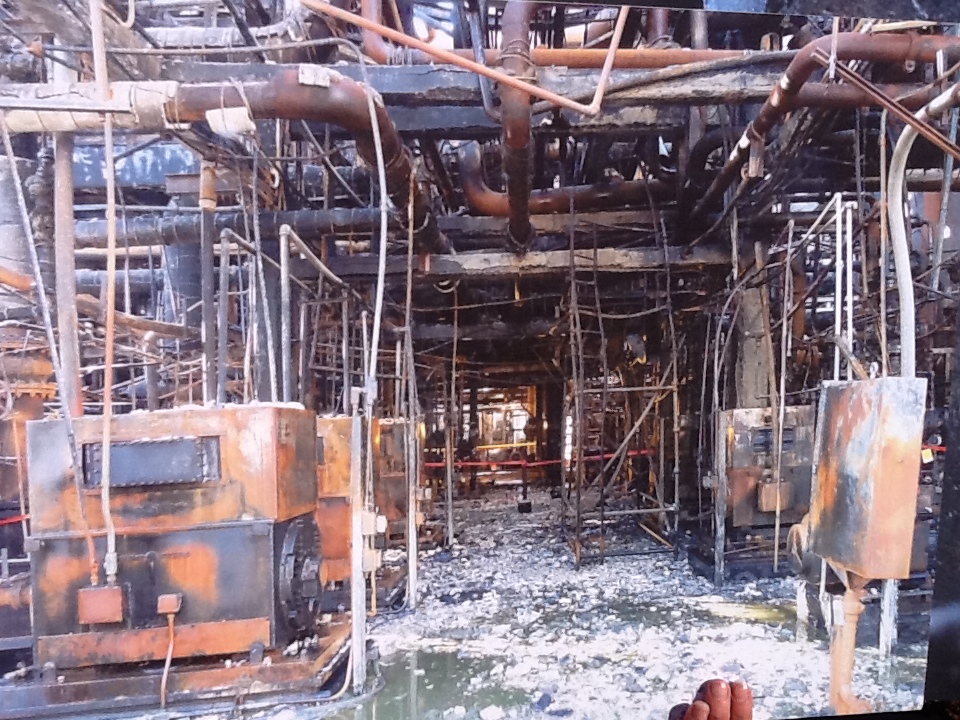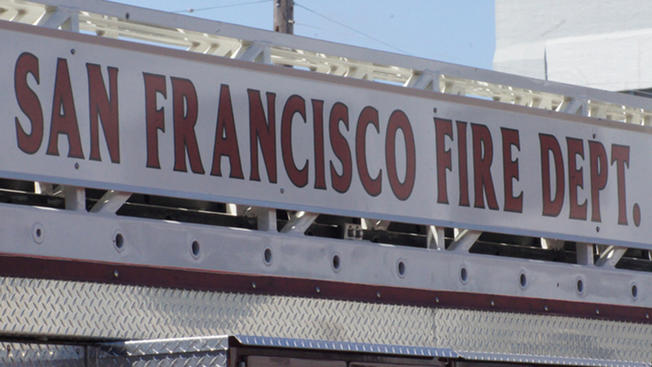Federal and state investigators are trying to determine how to safely enter the area where a fire broke out in a Chevron Corp. refinery last week so they can examine a failed pipe blamed for the blaze, which the company reportedly considered replacing nearly a year ago.
"The site remains hazardous with damaged overhead steel beams and with hydrocarbon vapor coming out of the failed pipe and another pipe in two locations, about 20 feet apart," Daniel Horowitz of the U.S. Chemical Safety Board said in an email to NBC Bay Area. "We can see the failed pipe but right now we can't get close enough to examine. We can see a several inches hole in the failed pipe"

Horowitz held a news conference outside Chevron Tuesday afternoon and showed the media the first photos taken inside the refinery post-fire.
The photos show a refinery pipe with huge hole in it.
(See photos from inside the refinery below).
"Investigators continue to be onsite and we are fully cooperating with them to move this investigation forward,'' said Melissa Ritchie, a company spokeswoman.
Also Tuesday, officials said they have internal surveillance video that shows a towering vapor cloud before a fire broke out at a Chevron Corp. refinery last week.
U.S. Chemical Safety Board officials said the video shows plant workers within the cloud shortly before last Monday's blast.
The vapor cloud was estimated to be about 150 to 200 feet high, as tall as the refinery tower. The blaze knocked an important refinery unit offline, reducing the facility's production and sending more than 9,000 people to hospitals with breathing complaints.
Structural engineers on Monday determined the damaged crude unit that was the site of the fire in the facility was too hazardous to enter. The 8-inch pipe leaked and its contents ignited, sending black smoke into the sky above Richmond, Calif., and thousands of nearby residents to hospitals with complaints of eye irritation and breathing difficulty.
Local
Investigators were discussing plans on how to make the unit safe so the faulty pipe could be removed for testing, said Hillary Cohen, a spokeswoman for the U.S. Chemical Safety Board.
"The crude unit is still off-limits because of safety concerns. Probably for another day or two,'' said Peter Melton, a spokesman for the state division of occupational safety and health, or Cal-OSHA. That agency is also investigating the cause of the blaze.
The Aug. 6 conflagration destroyed an area of the refinery that produces a large amount of the gasoline that satisfies California's clean-air regulations, which are the toughest in the nation. Other parts of the refinery, which supplies 16 percent of California's daily gas consumption, are still producing fuels.
But the refinery's reduced output has sent state gas prices rising higher than normal, analyst said. The average price for a gallon of regular on Monday in California was $4.07, up from $3.86 last Tuesday.
Chevron examined the line that failed and a larger companion line linked to it in October but decided it was good for another five years of service, the San Francisco Chronicle reported Tuesday.
After the fire started, the small leak in the pipe was discovered quickly by Chevron's engineers, a fact that may have helped save their lives, said Randy Sawyer, chief environmental health and hazardous materials officer for Contra Costa County, where the refinery is located. The company has set up a claims center to help residents seeking compensation from exposure to the smoke.
When the crew of more than a dozen people removed insulation to inspect the decades-old pipe, they were engulfed in a cloud of vapor and narrowly escaped the unit before the fire ignited, investigators from the U.S. Chemical Safety Board said.
"It was good they found the leak early ... the sooner you find the (leak) and ignition point, the less fuel there is to burn at the ignition point,'' Sawyer said.
Investigators want to learn why Chevron did not replace the old pipe that failed, and suspect corrosion as a likely cause of the leak. The company had inspected the unit in November and replaced a larger corroded pipe that was connected to the one that failed, federal investigators said.



-- NBC Bay Area's Jodi Hernandez contributed to this report.



